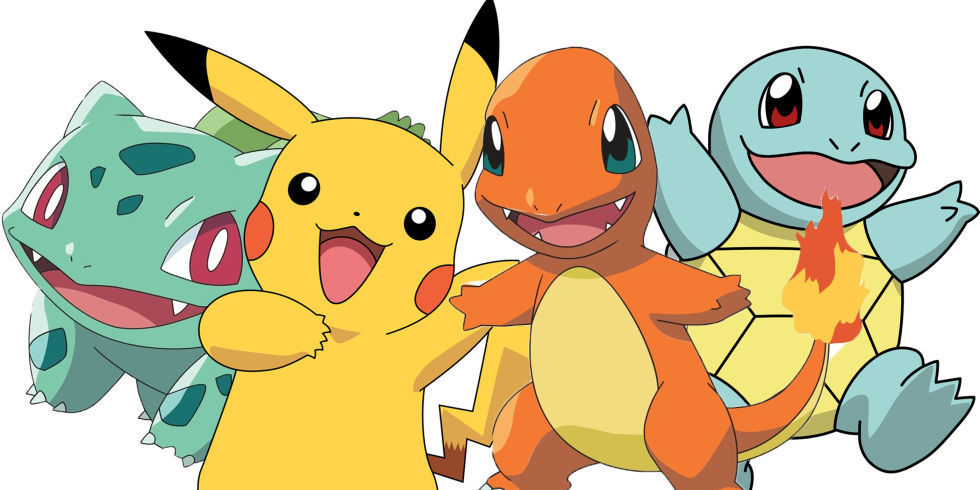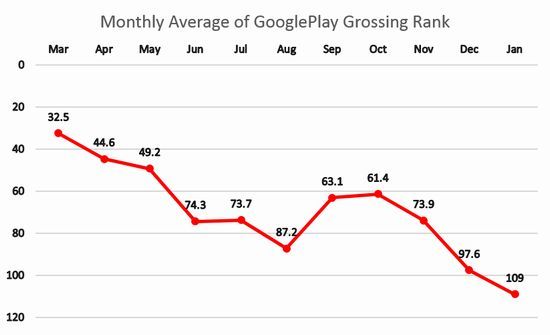Trends 2016 and 2017 in the Japanese mobile industry
- Transfer

Nintendo and PvP, monetization through Gacha and card games, pokemon lures and the market for services for online games - something like this can be briefly described in Japan’s mobile application market. Last year, its revenue reached $ 12.4 billion , making the country the third largest global application market. After a few years, many Japanese trends move to Western countries, so we decided to translate an article from the Moto Okamoto blog about Japanese trends and forecasts.
1. The success of Nintendo and Sony
2016 will be remembered for an unprecedented rise in popularity in the gaming market of two console platforms - Nintendo and Sony.

Two super-successful games were launched in 2016: Pokémon Go by Niantic and Super Mario Run by Nintendo. Pokémon Go was downloaded 500 million times in 8 weeks, and Super Mario Run 40 million times in 4 days. Both records are impressive. In addition, Nintendo plans to release Animal Crossing and Fire Emblem for smartphones this spring . There were problems with monetization in Super Mario Run: it is hoped that the two future releases will have a more balanced sales model.
Another console giant, Sony (Sony Interactive Entertainment), in April 2016 launched a subsidiary of Forward Works, which plans to focus on the Japanese mobile market. In addition, at a press conference in December, they presented several new titles: Hot Shots Golf , Wild Arms and Arc the Lad .
It is worth remembering about Aniplex, a division of Sony Music Entertainment Japan, which is engaged in music and anime. Have you heard of the Fate / Grand Order ? Last year, this mobile RPG hit the top 3 in revenue growth in Japan, right after Pokémon Go. Among other advantages, it has an excellent design - a kind of mixture of JRPG and a visual novel.
According to an AppAnnie report, Pokémon Go made $ 950 million last year. Impressive, huh? Look at this monthly rating (total revenue from iOS and Android): Aniplex's Fate / Grand Order beat Pokémon Go and was fourth in December 2016.

AppAnnie’s monthly revenue growth rating
2. PvP is more popular
For a long time, the Japanese industry believed that Japanese online gamers prefer co-op games over PvP. However, in 2016 several brilliant PvPs were released: Clash Royale strategy , Shadowverse card and Yu-Gi-Oh! as well as Shiro-Neko Tennis . Like Mario Tennis, based on the world of Super Mario Bros, Shiro-Neko Tennis is a sports simulator based on the world of Colopl Rune Story (action-RPG). It is simple: the popular Colopl Rune Story characters play tennis in Japan.

Shiro-Neko Tennis by Colopl
Of course, new local trends are mostly influenced by world stars such as Clash Royale or Hearthstone, and their example shows how successful Western and Asian PvP games can become in Japan. However, if these games are aimed at long-term success, it is important for them to maintain their loyal regular users and at the same time work with those who avoid PvP, because they are afraid to lose.
If you look at the average monthly Clash Royale rating in the Japanese Google Play, you can see how it is gradually decreasing. We did not do a detailed analysis of it, but it is obvious that maintaining the balance of a PvP game in Japan is very difficult.

Source: data from AndroDB
This chart is based on data from AndroDB. The average monthly rating is based on Google Play’s daily ratings. The January rating is calculated based on data received before January 21.
3. The success of digital card games
As mentioned above, card games are a huge success on the Japanese market. This situation is reminiscent of the 90s when, under the influence of the success of Magic the Gathering , Yu-Gi-Oh cards appeared! and Pokémon, which in turn have become popular around the world.
Here are 3 main reasons for the success of digital card games in 2016:
- Many teenagers who went crazy with such games in the 90s grew up but did not stop playing.
- About 5 years ago, in the golden age of Mobage and the Gree, publishers released hundreds of card games, following the example of Konami's super-successful Dragon Collection . Today, these games serve as the basis for many developers.
- Many great artists and studios create beautiful characters and monsters for new stories.
4. RPG in a super-competitive environment
RPG is a super popular genre in Japan. They generate high ARPUs and sell well, and as a result, competition in the genre becomes very high. The cost of development and advertising is growing, and games that are not associated with popular franchises, it is becoming more difficult to conquer the market. Combat systems are complicated to the level of RPG on the PS4 and PS VITA. Presentations of the games are amazing start-up videos, full voice acting, detailed 3D-battles and history. And although many Japanese gamers are greedy for new games in the first month after release, they, having appreciated the gameplay, quickly get fed up and move on to the next updates.
5. The increase in the number of Asian publishers
Japanese developers occupy a large part of the local game market, because Japanese gamers have certain preferences and it is not easy to match them. That is why the country is considered a very closed market.
However, the number of successful stories from foreign developers is gradually growing. Last year, Korean and Chinese publishers released several popular games like Seven Knights (Netmarble), THE KING OF FIGHTERS '98UM OL (OURPALM) and HIT (Nexon).
In general, when introducing a game to the Japanese market, it is very important to pay attention to the characters and their presentation: drawing and voice are especially important, and Asian developers have recently learned to cope with this.
Seven Knights, THE KING OF FIGHTERS'98 UM OL and HIT Games
6. A variety of monetization strategies
Usually, Japanese mobile free-to-play games monetized through the Gacha model show new game items once every couple of weeks or once a month. This update rate complicates the management of the game balance and inflates the rotation of objects in the game. Things quickly become obsolete, lose their effectiveness, and the period when the user is ready to pay the game is reduced. This is a problem that many long-lived games encounter. On the other hand, in digital card games, new products are launched once every 3 months, and this is enough time to debug the game balance.
Pokémon Go showcases new ways to monetize - egg incubator , happy eggs , Lure module and lures. The incredible success of the game surprised and inspired Japanese developers who previously preferred the Gacha model. Although geolocation-based games have been appearing in Japan in dozens since the early 2000s, their ARPU was low and developers chose the proven high-yield Gacha.
Super Mario Run is a bold attempt to monetize using the free-to-start model. It is difficult to say whether the result meets expectations, but some experts consider it a good way to make money in the late majority in the Japanese mobile market.
7. Services for online games.
Companies such as Mynet , funplex, and others specializing in services for online games are rapidly developing in Japan . They do not develop games, but buy them from other companies, refine the quality and receive a higher income.
These companies avoid unpredictability in which you cannot understand whether the game will take off or fail. On the other hand, developers get their percentage from sales and can devote themselves completely to the development of new titles.
The revenues of most online games fall over time. When earnings cease to cover maintenance costs, developers close the project. However, if instead you can sell the game to a company specializing specifically in maintenance, the project will live on and users will be able to play as before.
In recent years, the number of purchases and sales of online games has grown rapidly, and this market has become called the secondary industry. Now several new companies are entering it, and Mynet and funplex (subsidiaries of GREE) are experiencing serious growth.
Conclusion
All of the above trends will continue in 2017, which means that foreign companies have more chances to enter the Japanese market. In the end, I can only say that the segment of games for women should also grow sharply.
